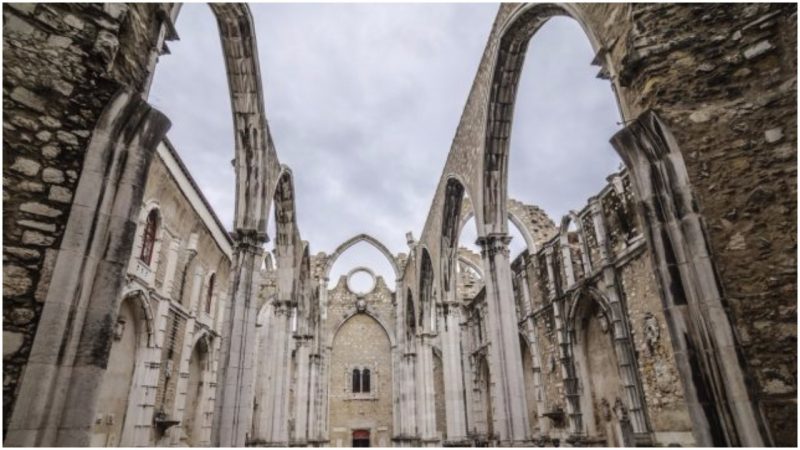One of the ways to experience Lisbon’s historical significance is to take a tour through the ruins of the Carmo Convent and Church situated in the heart of Portugal’s capital.
This intriguing archaeological building is a testimony to the deadliest earthquake in Lisbon’s history in 1755. The indescribable damage caused by this disaster touched almost the entire area of modern Lisbon, but Convent of Our Lady of Mount Carmel and its Church are among the rare survivors. This story of the past and its aftermath unravels in front of the eyes of visitors, scholars, and archaeologists.
On the morning of November 1, 1755, Lisbon’s streets were full of people praying on the Day of All Saints when the unthinkable happened. An earthquake, which is thought to have reached a magnitude of around 9 on the Richter Scale, shook the city and caused a catastrophe that marked Lisbon forever.
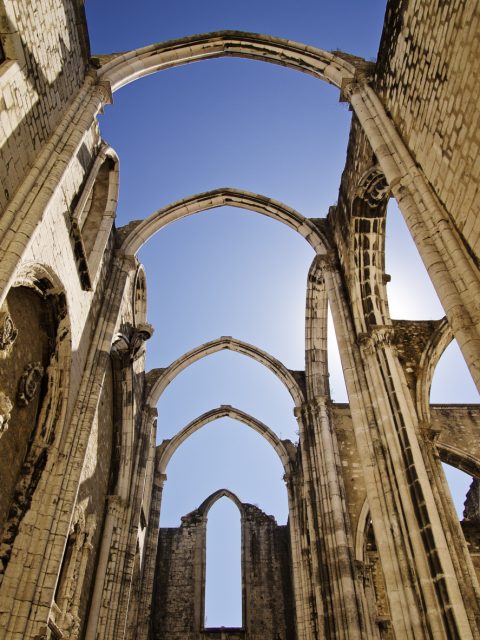
According to some ancient records, the event was a replica of Doomsday–the earthquake was followed by fire and then by a tsunami that nearly wiped the city off the face of the Earth. The medieval religious edifice, Carmo Convent and Church, lay in ruins, roofless, while its library containing 5,000 books was completely destroyed.
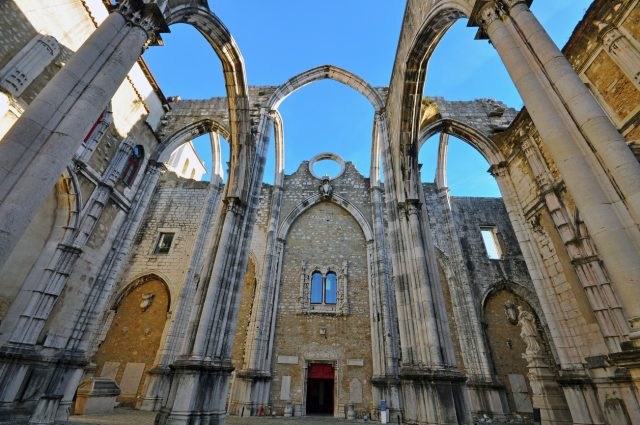
The Carmo complex was built in 1389 and expanded in 1423 by order of Nuno Alvares Pereira, the head of the Portugese army and the king’s right hand. After winning the battle against the Castilian army in 1385, a victory which ensured Portugal’s independence, King John I rewarded Nuno and provided him financial support to found the convent. In 1404, Nuno donated his wealth to the convent and later became a full brother.
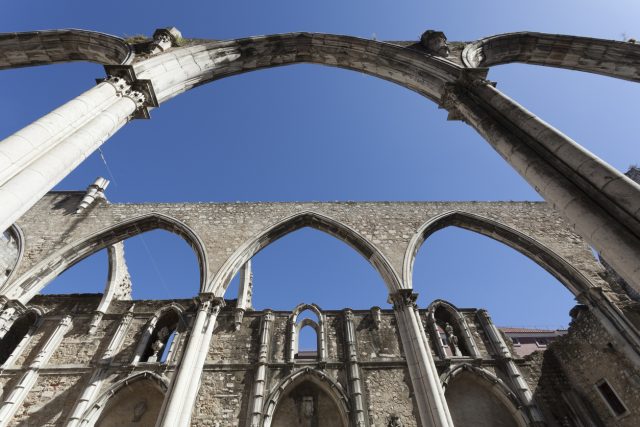
Prior to the earthquake, the convent and the church represented the crowning point of all Lisbon’s Gothic religious edifices. The convent was bestowed to the Carmelite order, but the later massive, irreparable damage ended the building’s service and purpose.
After the earthquake, the site was intentionally left roofless as a reminder of the disaster, with arches pointed to the vast sky. Marques de Pombal, the reconstructor of downtown Lisbon, ordered the delicate arches to be left as they were as a reminder of all the victims who lost their lives during the devastating event. Today, the convent and the church are home to the Carmo Archaeological Museum, a small museum dedicated to Portuguese history, displaying a variety of ancient artifacts, including some from the Bronze Age and the Roman era.
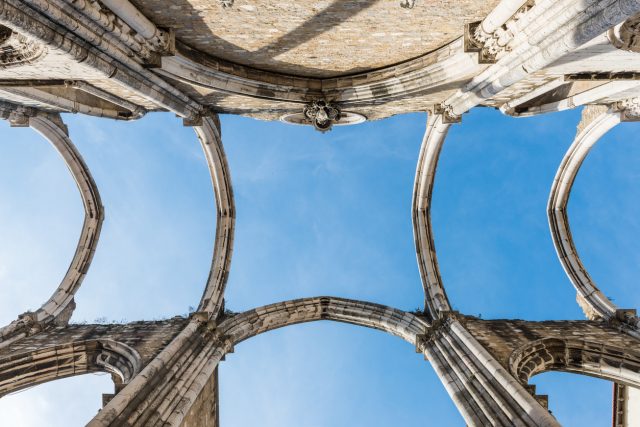
The site is in the charming square of Largo do Carmo in the heart of the Chiado district. This area is usually filled with massive flocks of tourists who want to see and sample the most popular historical sites of Lisbon.
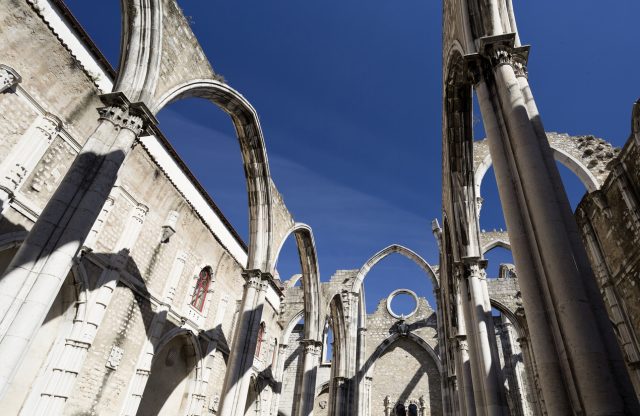
The lively colors of the district confront Carmo’s austere exterior. The convent’s red gate greets the visitors who are eager to see and explore further. The interior explicitly displays the religious importance of the Gothic church through towering pillars and tall arches.
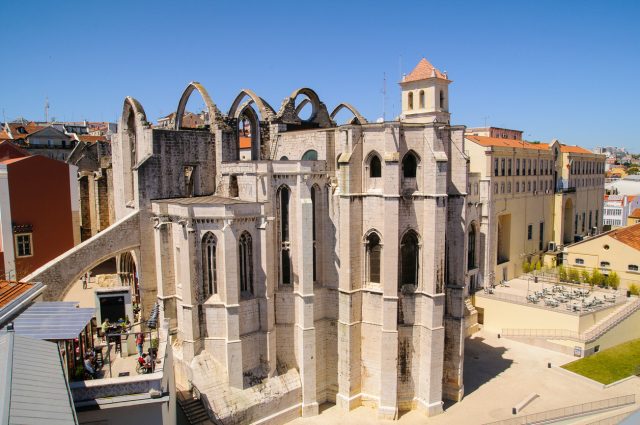
While inside, one can see tombs and statues and enjoy the marvels of the Gothic architecture. The skeleton and the “ribs” of this outstanding convent adorn Lisbon’s skyline and can be seen from many viewpoints (“miradouros”) throughout the city. In 1864, the skeleton was donated to the Association of Portuguese Archaeologists, Igreja do Carmo, which successfully restored a great deal of the damage and transformed the church into the museum.
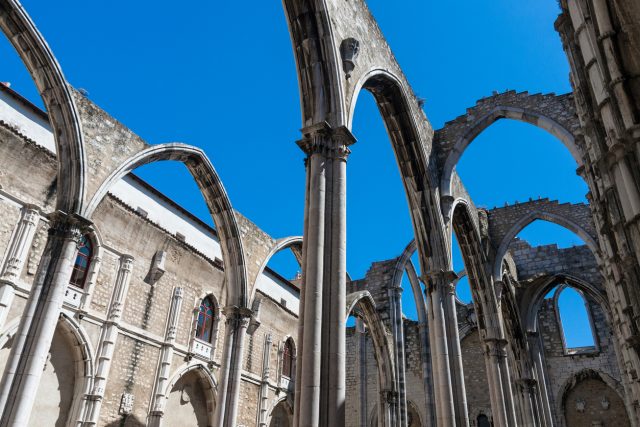
During the liberation from the communist Salazar government in 1974, the convent was a central military base and the last stronghold of the President. The military character of the site still remains as, nowadays, the old convent is one of the central buildings of the Municipal Guard.
Many might not notice, but among the mystic inscriptions on the walls, right at the exit of the convent, is a reference chiseled into the stone to the 40 days of indulgence decreed by Pope Clement VII for the faithful Christians visiting the church in the early 16th century. This represented a reduction of 40 days in the amount of time his congregation would spend in purgatory before entering heaven.
